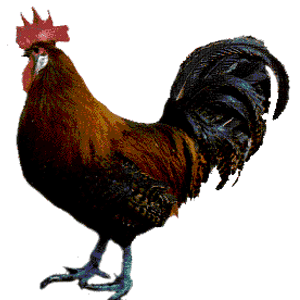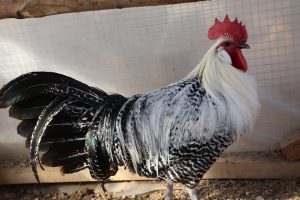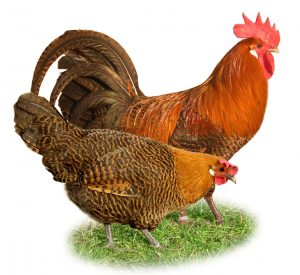
Overview
The Brakel chicken, otherwise known as the Braekel chicken, is an old breed that originated in the town of Brakel in Belgium in the 15th century. It’s considered a rare breed as its population has declined as the popularity of hybrid chickens has increased.
The Brakel is closely related to the Campine, they look almost completely indistinguishable, but you can tell them apart by their weight as the Campine chicken is significantly lighter. This is thought to have come about from differences in land fertility across regions in Belgium, which resulted in skinnier and lighter chickens in the less fertile region.
Eggs
Size
Small sized eggs
Color
White colored eggs
Production per year
180 per annum
When do they start laying eggs?
From 6 months

Brakel Characteristics
Temperament / Are they good as pets?
They’re friendly towards people they know but can be untrusting of strangers.
How do I tame Brakel chickens?
The easiest way to tame chickens is to hold them whilst they are still young. If you don’t want to do this or have older birds then you can feed them out of your hand to tame them.
How many do I need to buy?
At an absolute minimum you need 2 chickens, but we would recommend 6 as an ideal small flock size.
How much space do they need?
They should be free range as they are much happier with more space. You should have 250 square feet per chicken.
Will they mix with my other chickens?
Yes they should mix with your other chickens. If you keep them confined they may bully each other.
Appearance
The Brakel is a lighter version of the Campine chicken. Their necks are a block color, usually gold silver, and they have striped black and white plumage. They have a single red comb and wattle, as well as white earlobes.
Available in Europe as Black, White, Blue, Chamois and Black Headed.
The short legged version of the Brakel Chicken is called the Brakel Courtes Pattes.


Feeding
What should I feed them?
When your first get them as chicks they should be fed growers mash. This has everything they need to grow big and strong and is a smaller version of chicken feed which can be more easily ingested with a 19{cfcd481556a8b43fba6af451761032bd323e94372a0c1e607} protein content.
At 6 weeks they can be feed normal chicken pellets which is chicken feed pressed in to pellets with 15-16{cfcd481556a8b43fba6af451761032bd323e94372a0c1e607} protein.
At 18 weeks your chickens will need nutrients to support them with making eggs so gradually introduce layers pellets or layers mash, this has around 16{cfcd481556a8b43fba6af451761032bd323e94372a0c1e607} protein.
How much should I feed them?
Between 2.9oz (80g) and 4.2oz (120g) a day each. Start by feeding them ¼ of a pound (113g) and then change the feed amount depending on how much they eat. You can either feed them in the morning and evening or just put feed in their feeder for them to eat as they please.
What can’t they eat?
There are lots of things chickens can’t eat. The two main things are chocolate and beans as these contain theobromine and phytohemagglutinin, which can be fatal to chickens if consumed. Don’t feed chickens moldy food as that can make them very unwell.
In England it’s illegal to feed your chicken scraps from your kitchen.
What do I need to keep chickens?
They need a coop which has 1.1m2 or 11 square feet per chicken. Inside the coop you need a perch for each bird. Their tail feathers are long, so when placing the perch make sure that it is not too close to any walls, as not to squish their feathers.
You should have laying boxes for them to lay their eggs in, these should be wooden. The coop needs a sunken fence to go around and over it so that it keeps your birds safe at night. They need at least 250 square feet per bird of land outside of the coop for them to roam around in.
The silver birds of this breed can change color in the sun, so if you’re keeping them for ornamental purposes their ranging area needs to be completely in the shade so that there plumage won’t change.
Grit is really important to the egg laying process so make sure they always have some.
They also always need access to water, the container should be sturdy so that it can’t be tipped or stood in and it should be kept away from the sun’s rays as chickens don’t like hot water.

